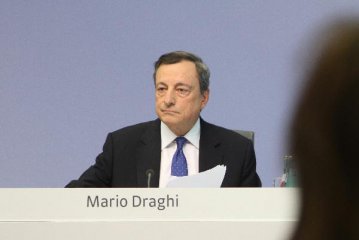The German economy grew steadily but at a slightly lower rate than anticipated in the second quarter of 2017, figures released Tuesday by the Federal Statistical Office showed.
Gross Domestic Product (GDP) in Germany was up 0.6 percent between April and June from the previous quarter, just below economists' expectations of 0.7 percent.
Nevertheless, the figure confirmed a continuing overall positive trend which economists attributed to rising investment and domestic consumption.
German consumers are increasingly in a spending mood as low unemployment contributes to higher earnings and the lasting low interest rate environment disincentivizes saving. At the same time, the public sector has also raised its spending to accommodate hundreds of thousands of refugees.
Unlike during the first quarter of 2017, trade was not a major driver of growth between April and June.
"Price-adjusted imports grew much faster than exports compared to the same period last year," the Federal Statistical Office noted.
Firms appeared unperturbed by international risk factors such as Brexit, underscoring a new record level in business confidence recently measured by the Munich-based Ifo Institute for Economic Research. The optimism in boardrooms was reflected in growing investment in machinery, buildings and other assets.
The healthy showing of the German economy adds to a wider picture of a strengthening economic recovery across the Eurozone. The 19-member block grew by 0.6 percent in the second quarter of 2017, slightly behind the United States and twice the rate of Britain.
Gross Domestic Product (GDP) in Germany was up 0.6 percent between April and June from the previous quarter, just below economists' expectations of 0.7 percent.
Nevertheless, the figure confirmed a continuing overall positive trend which economists attributed to rising investment and domestic consumption.
German consumers are increasingly in a spending mood as low unemployment contributes to higher earnings and the lasting low interest rate environment disincentivizes saving. At the same time, the public sector has also raised its spending to accommodate hundreds of thousands of refugees.
Unlike during the first quarter of 2017, trade was not a major driver of growth between April and June.
"Price-adjusted imports grew much faster than exports compared to the same period last year," the Federal Statistical Office noted.
Firms appeared unperturbed by international risk factors such as Brexit, underscoring a new record level in business confidence recently measured by the Munich-based Ifo Institute for Economic Research. The optimism in boardrooms was reflected in growing investment in machinery, buildings and other assets.
The healthy showing of the German economy adds to a wider picture of a strengthening economic recovery across the Eurozone. The 19-member block grew by 0.6 percent in the second quarter of 2017, slightly behind the United States and twice the rate of Britain.






















Latest comments